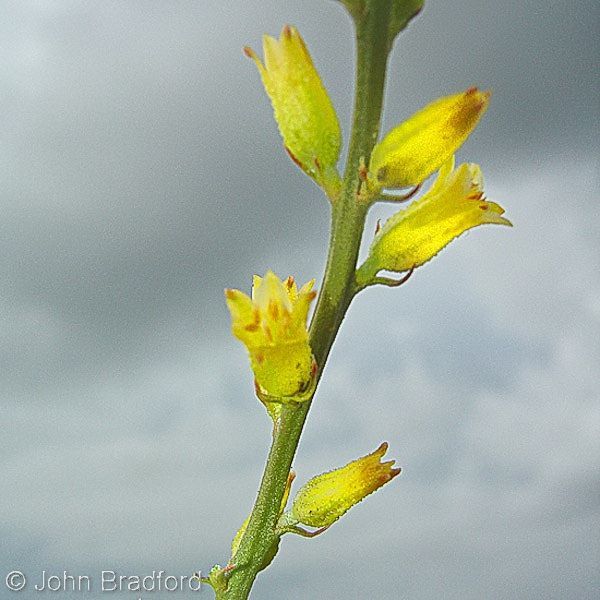FNPS Plant Database
Aletris lutea
Nomenclature
Common Name:
Synonym(s):
Genus species:
Family:
Nartheciaceae
Plant Specifics
Form:
Size:
Life Span:
Long-lived perennial
Flower Color:
Fruit Color:
Phenology:
Noted For:
Landscaping
Recommended Uses:
Considerations:
Availability:
Propagation:
Seed. If you manage to establish a patch, potentially vegetatively through division of the bulbs. This species is rarely, if ever, cultivated and its specific propagation requirements are not well known.
It has a reputation for being difficult to grow.
Light:
Moisture Tolerance:
Always Flooded---------------------------------Extremely Dry
□□□□□□□□□□□□□□□□□□■■■■■■□□□□□□□□□□□□□□□□□□
Somewhat moist, no flooding -to- Somewhat moist, no flooding
Salt Water Flooding Tolerance:
Unknown
Salt Spray/Salty Soil Tolerance:
Low/no tolerance of salty wind or direct salt spray
Soil or Other Substrate:
Sand
Soil pH:
Suitable to Grow In:
8A,8B,9A,9B,10A,10B

USDA zones are based on the average annual extreme minimum winter temperature.
Don't know your zone? Click here to search by zip code.
Ecology
Wildlife:
Pollinated by bumblebees and beeflies.
Native Habitats:
Natural Range in Florida:
Visit the USF Libraries Atlas of Florida Plants
Comments:
Ethnobotany:
General Comments:
Citations:
Sullivan, V. (1973). Biosystematics of Aletris Lutea Small, Aletris obovata Nash, and Natural Hybrids (Liliaceae). Brittonia, 25(3), 294-303. Retrieved June 12, 2020, from www.jstor.org/stable/2805590.
North Carolina Extension Gardener Plant Toolbox. Accessed 2022. https://plants.ces.ncsu.edu/plants/aletris-lutea/.
Wunderlin, R. P., B. F. Hansen, A. R. Franck, and F. B. Essig. 2022. Atlas of Florida Plants ( https://florida.plantatlas.usf.edu/ ). Institute for Systematic Botany, University of South Florida, Tampa.


-1920w.jpg)






